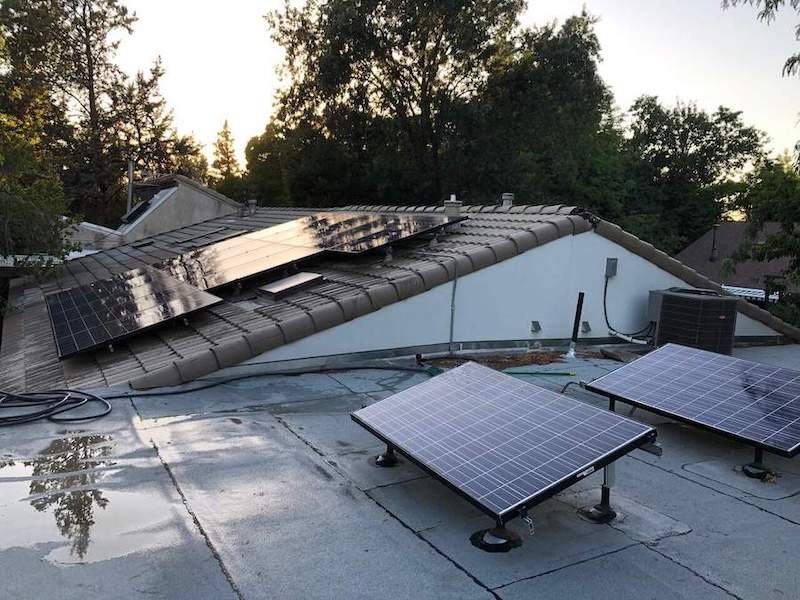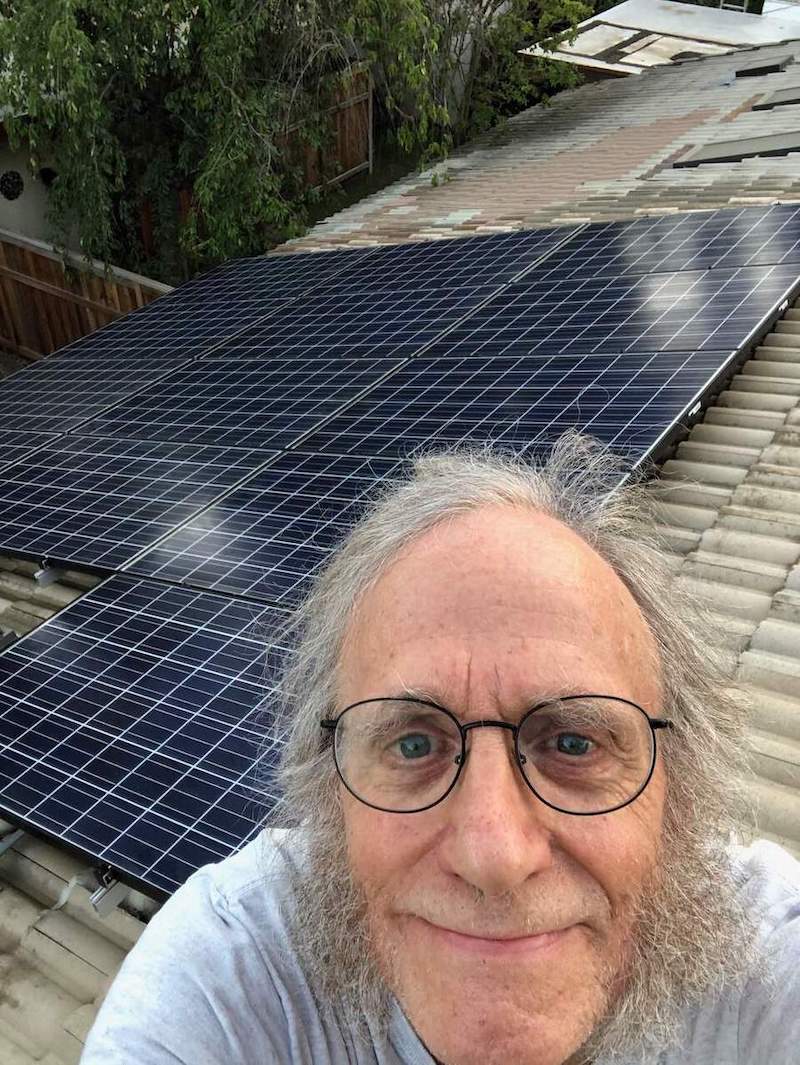
For Jon Bjornstad, the decision to install solar panels on his home was not necessarily about saving money. He's not opposed to saving money and not in a position to ignore a good financial investment when he sees it. But from his point of view as a committed environmentalist, installing solar panels was simply the right thing to do. In his words, "I decided to put my money where my mouth was."

As he says, "When the sun shines it produces more and when it's cloudy it produces less. Once I figured that out, I wasn't really interested in spending a lot of time monitoring power production." Whether sunny or cloudy, installing rooftop solar is still the right thing to do.

Jon has named his car Tarry Scoot. It can "scoot" when he wants it to. But with its limited range, it encourages him to "tarry," not go too far too fast. He can drive the car to Santa Cruz, stopping two times for 30 minute fast-charging. He has the routine down and knows where he can charge along the route. Jon notes, "The car is very high quality, very quiet, very smooth, very fast, very green. It just doesn't go very far!" But Jon is prepared to make a small sacrifice in order to do his bit to save the planet.
Jon recently thought he might trade up to a Tesla Model 3. He heard of a lightly used one for sale for a good price. That car, with the performance package, had a range of 300 miles and would accelerate 0 to 60 mph in 3.5 seconds. Quite a step up from the BMW i-3. But Jon did not buy the car and, in retrospect, is not disappointed. He doesn't think any car really needs to accelerate that fast nor does any human being need to want to. The BMW has only 50,000 miles on it. He has noticed no reduction in range over time and it still mostly gets him where he wants to go. If he ever has to drive a long distance quickly, he can simply rent a car. Jon intends to "be on the right side of history" and thinks that means driving electric.

See both these videos as part a magical mathematical mystery on Jon's Logical Poetry website named "The Mystery of the Car, the Trench, and the Pond"
In 2005, Jon decided to become vegan, dropping all animal products from his diet. Now the motivation had changed quite clearly to have an environmental component. Jon explains that "animal agriculture has a very large impact on global warming, water usage, pollution, habitat destruction, rainforest depletion, etc." Motivations can change but still, in either case, he feels he is doing the right thing. For additional information on the environmental benefits of reducing meat consumption, see this link to articles in the Cool Davis archives.
Jon has always been a non-conformist, examining conventions and traditions to see if they still make sense. He tries to maintain a sense of social responsibility and environmental stewardship. His pioneering ideas of generating power for his home with solar panels and coupling that with an electric car are becoming much more mainstream. Early adaptors such as Jon point the way to a healthier and more resilient community.